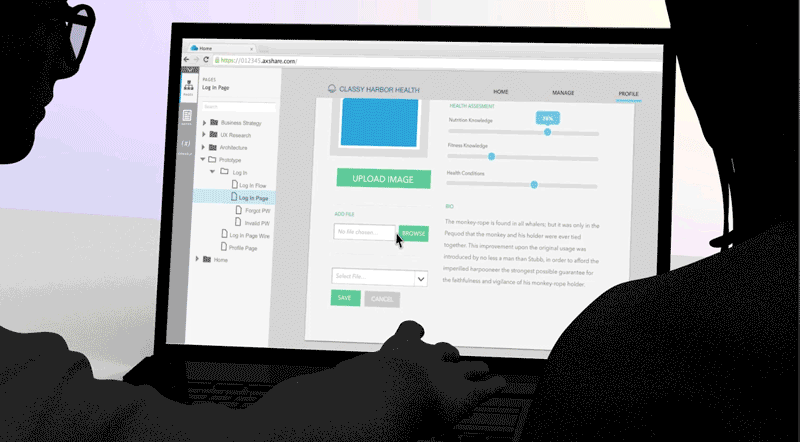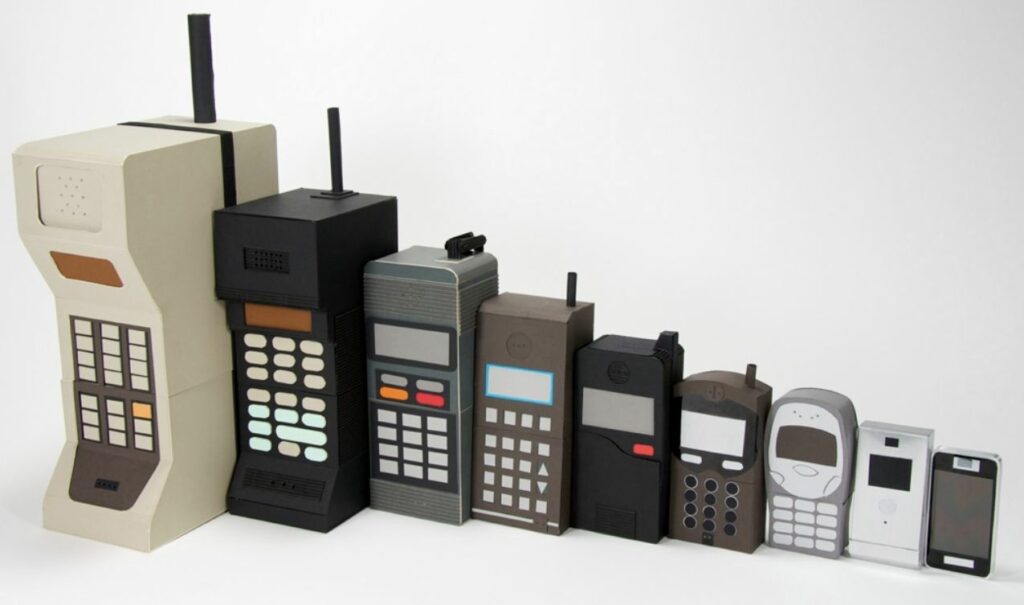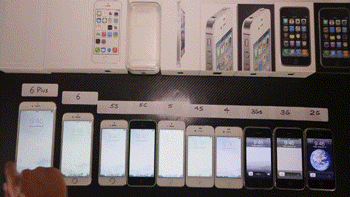If, like us, you like to attend meetups and learn about them every day: here are 10 interesting, funny or useless facts in our little UX galaxy to shine in Meetup UX!

#1 –Wojciech Jastrzebowski
Impossible to pronounce it, but you must know its name! Wojciech Jastrzebowski is considered the founder of the term and concept ofergonomics.
A Polish engineer and naturalist, he published the first “Précis d'Ergonomie” in 1857.
He defines it in these terms:
By this term Ergonomics, derived from the Greek “Ergon” (work) and “Nomos” (principle or law) we designate the science of work which is the use of the forces and faculties […] of man.
#2 – The Birth of Axure

Axure is the prototyping software that leaves no one indifferent: we love it or we hate it! This prodigy was born in 2002. Designed by Victor Hsu and Martin Smith, it is one of our most pioneering tools. However, it now faces serious competitors.
For the record, Victor and Martin worked for a start-up. They repeatedly got stuck in the typical software development cycle. The impossibility of evaluating solutions as a team before realizing them led to end products that were ineffective or full of compromises.
So they launched Axure with the goal of creating a tool that would allow non-programmers to build documented interactive prototypes. Its functionalities have made it possible to rethink the software development cycle:
- Build a prototype to test solutions and gather feedback.
- Iterate until you reach the correct solution.
- Present the prototype to align development.
#3 – The figures of Don Norman
No UX designer can ignore or have read Don Norman. If you browse his site, you will find nearly 190 articles published since 2004, an average of 14 articles per year.
In parallel, the site lists 12 published books. And, this without counting the videos, interviews, conferences and other activities with Nielsen/Norman Group.
Don Norman will be 82 years old on December 25. Our Santa Claus is still in shape!
#4 – The birth of the touch screen
Le first touch screen is 45 years old! In 1972, the University of Illinois and IBM designed an assisted education system, named PLATO IV. It was a single-point plasma screen: the user could only press once at a time.
It will be necessary to wait until 1984 to see the appearance of a multipoint system using a capacitive touch surface. This is the system that we find on the majority of our current touch screens and which has completely changed our interactions as well as our mobile behavior.
#5 – A story of Post-its
Either you are a UX designer or you are not: post-its are sacred to us! The story of Sticky really begins in 1980 in the laboratories of 3M.
3M was looking for new adhesives, strong adhesives. One of their scientists, Dr. Spencer Silver, discovered an adhesive that sticks slightly to surfaces without actually sticking to them. Convinced that this discovery had an interest, Silver talked about it to his colleagues for years without finding an application.
It was Art Fry, another scientist who, frustrated by the bookmarks falling from his choir book, had an idea for an application. He needed pieces of paper sticking slightly to the pages without damaging them. In partnership with Silver, they started designing sticky bookmarks, then naturally wrote their notes on them in the office. Realizing this, they understood the full potential of these sticky notes.
There are now dozens of them in our offices, of all colors. And if you have a co-design workshop to do, calculate the right number of post-its! They are in blocks of 45 or 90 sheets precisely.
#6 – The missing keys of the Macintosh 128K
The keyboard of Macintosh 128K did not have directional arrows. It was a will of Steve Jobs. The goal was to force the evolution of the User Experience. By removing the arrows, users had to familiarize themselves with the use of the mouse.
Moreover, this absence of directional commands has forced designers and software developers to create graphical interfaces that do not respond only to command lines. A hell of a bet, which paid off when we see the evolution of our interfaces!
#7 – The first mobile phone

Le first phone call in the world issued from a cell phone dates back to 1973. Martin Cooper, a Motorola engineer, called a rival telecommunications company and informed them that he was talking via a cell phone!
With all our technological advancements, it's impressive to see the difference between a current smartphone and this antiquity. The Cooper phone weighed 1,1kg and measured approximately 22x12x44cm. This prototype allowed 30 minutes of telecommunications for a recharge time of 10 hours. Not very convenient to get around, but that was the start!
#8 – Azertyuiop
The QWERTY layout, patented in 1878, was designed to avoid the risk of jamming on mechanical typewriters. The principle was to distance the most used letters in English to avoid blocking the rods between them. The disposition QWERTY responded to the same problem for the French language in the late 19th century.
Although another layout was proposed by Albert Navarre in 1907, the ZHAY layout, impossible to change. The secretaries are already accustomed to QWERTY and AZERTY. With the arrival of digital, the problems of stuck mechanical rods disappeared, and yet we still use QWERTY and AZERTY as a keyboard.
Unlike our European neighbors, French keyboards do not have set standards. The layout of the letters is the same, but that of the special characters varies from manufacturer to manufacturer. In 2015, the government expressed the will to change this problem with the help ofAFNOR.
#9 – Lazlo and Gyorgy Biro
You probably don't know them. And yet, they are at the origin of an essential daily object: the ballpoint pen.
Presented at the Budapest International Fair in 1931, this model of ballpoint pen was the most viable until then. In 1938, the Biro brothers tested their concept before leaving for Argentina in 1941 to set up their own company “Biro Pens”. In Europe, Marcel Bich bought the patent from the Biro brothers in 1945, and launched what would be his flagship product: the Bic pen.
#10 – The retro gesture of the iPhone X

The iPhone X is making a lot of headlines. Among his innovations are the appropriation of a gestures to navigate without any buttons. Except that it's not really an innovation… A phone named Palm Pre was marketed in 2009 with similar gestures and features. Qualcomm - owning the intellectual property of Palm - and Apple have now entered a complex royalty war.
Innovation has never been simple: does the invention belong to the person who discovered it or to the person who applies and spreads it? We let you be the judge!
TAKE AWAY
If you have learned something (s) with this article, mission accomplished! For my part, I discovered the missing keys of the Macintosh 128K, the origin of post-its and re-discovered the name of Wojciech Jastrzebowski while writing it!
@UXRepublic
UX/UI ECO-DESIGN # Paris
SMILE Paris
163 quay of Doctor Dervaux 92600 Asnières-sur-Seine
DESIGN THINKING: CREATING INNOVATION # Belgium
UX-REPUBLIC Belgium
12 avenue de Broqueville - 1150 Woluwe-Saint-Pierre
MANAGING AND MEASURING UX # Paris
SMILE Paris
163 quay of Doctor Dervaux 92600 Asnières-sur-Seine
DESIGN SPRINT: INITIATION & FACILITATION # Paris
SMILE Paris
163 quay of Doctor Dervaux 92600 Asnières-sur-Seine
UX-DESIGN: THE FUNDAMENTALS # Belgium
UX-REPUBLIC Belgium
12 avenue de Broqueville - 1150 Woluwe-Saint-Pierre
GOOGLE ANALYTICS 4 #Paris
SMILE Paris
163 quay of Doctor Dervaux 92600 Asnières-sur-Seine
ACCESSIBLE UX/UI DESIGN # Belgium
UX-REPUBLIC Belgium
12 avenue de Broqueville - 1150 Woluwe-Saint-Pierre
EXPERIENCE MAPPING # Paris
SMILE Paris
163 quay of Doctor Dervaux 92600 Asnières-sur-Seine












